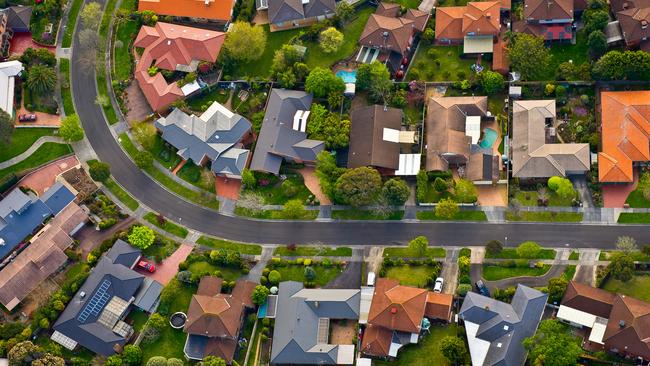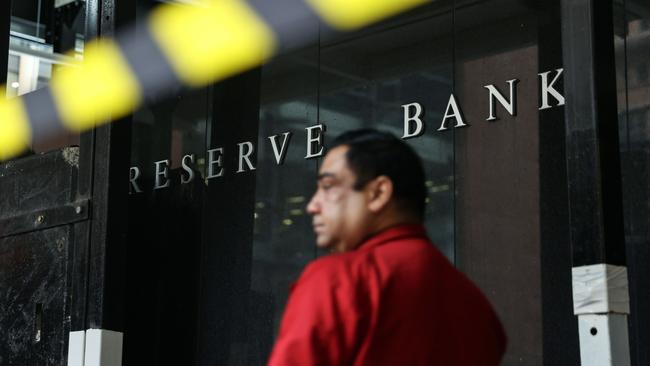
The new central bank governor has come out of the blocks with a hawkish bent. Where other central banks around the world are talking about a path on how to cut rates, Bullock is talking them up, just as much as she is talking them down.
It’s the new era for the powerful RBA after Jim Chalmers got his way with a shake-up that also cost the previous governor, Philip Lowe, his job.

This month’s RBA board meeting was a two-day affair, up from the previous single-day meetings. The RBA will meet less frequently too, with interest rate decisions to be staggered over six weeks, compared to the previous monthly meetings.
Adding to the drama, the rate decision – even a hold – is now followed by a press conference, much like the format of the US Federal Reserve. However, there is an Australian twist to this burst of disclosure with the central bank governor also fielding questions on everything from Taylor Swift to tax cuts.
Bullock, a long-time deputy governor who was promoted by the Treasurer mid-last year, held her ground over 45 minutes of questions. And growing up in northern NSW, she played to her strengths as a plain speaker. This means she tells it like it is, even when many people aren’t going to like the message.
Indeed, Bullock’s frankness could be a headache for any government – a good thing for the RBA’s hard-won independence.
While official numbers last week showed inflation is retreating and cooling at a faster pace than expected, Bullock surprised many seasoned RBA watchers on Tuesday as she explicitly left the option of interest rate rises on the table.
This comes as other central banks around the world are now starting

to talk about the path to cutting the cash rate. Australia isn’t ready to have this discussion just yet. It will come, but Bullock wants to see more evidence inflation is “sustainably” in retreat.
Although the market still believes Bullock’s November rate rise, taking it to the current level of 4.35 per cent, is the peak rate, she reminded us the “risks are balanced”, with any number of unknown shocks on the horizon. There’s only a 50 per cent chance that inflation will sustainably return to its forecast band, she noted in response to a question.
“We are not ruling out what we might have to do next. We’re not ruling in or out anything. We are focused on bringing inflation down,” Bullock said.
Cuts are coming, but not until much later this year. And the RBA’s own assumptions have the cash rate dropping at least three times by June next year. After Bullock spoke, the market slightly pushed out its assumption of rate cuts starting from August to September.
However there’s little upside for Bullock to be talking about earlier-than-expected rate cuts.
The economy might be slowing, but she still sees too much demand across parts of it. At the same time, there’s much on the horizon that could upset efforts to contain the difficult last mile of inflation. Bullock explicitly said the Albanese government’s stage three tax cuts were neutral to inflation. However, there are lumpy wage rises coming down the line and home prices are again starting to take off, which is likely to all feed into demand through the economy. As well, big-spending state governments remain on their infrastructure drive.
Bullock is worried that if everyone banks the RBA’s “future” rate cuts today, that’s going to mean even more spending and off we go again.
Homeowners paying the extra hit on mortgages need to remember the RBA was much later to the rate rise cycle than the rest of the world. And where others are paving the way for a cut, this means Australia is also going to be late on the way out.
Rampant inflation is more painful to homeowners than higher cash rates. And Bullock is not afraid to remind them of that.
Retail resilience
If the RBA’s Michele Bullock needed a real world example that consumer demand has been resilient to the string of rate rises, she was given two. Department store Myer and furniture play Nick Scali both operate at the highly discretionary end of retail. Sales updates from both on Tuesday showed the spending slowdown had been felt through summer, but it is not as bad as many had feared. Remember as a fashion retailer Myer operates in some of the retail segment’s most vulnerable to a pullback in consumer spending. It posted first-half comparable group sales up 0.1 per cent from the same time last year. This number was remarkable as Myer posted record sales numbers this time a year ago, when the official cash rate averaged around half the current level.

Nick Scali, meanwhile, managed to protect profit margins, showing it hasn’t had to rely on discounting to move stock. It also experienced strong orders in November and December.
Myer shares jumped more than 14 per cent, hitting a nine-month high, while Nick Scali surged 16.6 per cent.
Oscar Oberg, the lead portfolio manager for small to mid-cap specialist WAM Capital, was a backer of both stocks, sensing the market had talked itself down.
“Clearly, the evidence through December and January was that things probably weren’t as bad as it appeared,” Oberg said.
“A lot of retailers were comparing the previous year’s numbers, which were negative. The market always buys retail when there’s positive, comparable sales numbers. So, I think it’s just a simple case of things aren’t as bad as probably what perceptions were out there from a year ago”.
As the economy hits the low point, this also means there is upside to earnings when momentum picks up.
That Myer held its ground in the tough December half points to the challenge the retailer has in replacing outgoing chief executive John King, who is preparing to leave in coming months. King has worked the 7 million-plus members of the Myer One loyalty program to drive sales, particularly online. However, discounting has ultimately affected profit.
“To match our best first-half sales result on record, on a comparable sales basis, is an encouraging result given the current economic environment,” he said.
Myer is about to open its new massive distribution centre in Melbourne’s west, something that King is betting will help drive down costs.
johnstone@theaustralian.com.au




Reserve Bank governor Michele Bullock has shown the state premiers and everyone else calling for an early rate cut who’s really running the economy. And she is determined to finish the job.